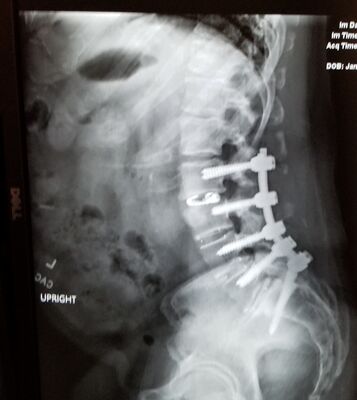How big is this spring?
Oct 15, 2014 16:52:48 #
I thought you would like to look at my first macro. I just received some macro filters in the mail and decided to give this a try.
I was afraid that taking a photo of an insect (which was moving here and there) would drive me buggy, so I chose an inanimate object.
I am curious, macro filters seem to be quite a bit less expensive, and smaller, than a macro lens. So what is the disadvantage?
I was afraid that taking a photo of an insect (which was moving here and there) would drive me buggy, so I chose an inanimate object.
I am curious, macro filters seem to be quite a bit less expensive, and smaller, than a macro lens. So what is the disadvantage?
Is this the rear suspension for a rebuilt 1932 Ford, or an ink pen spring?
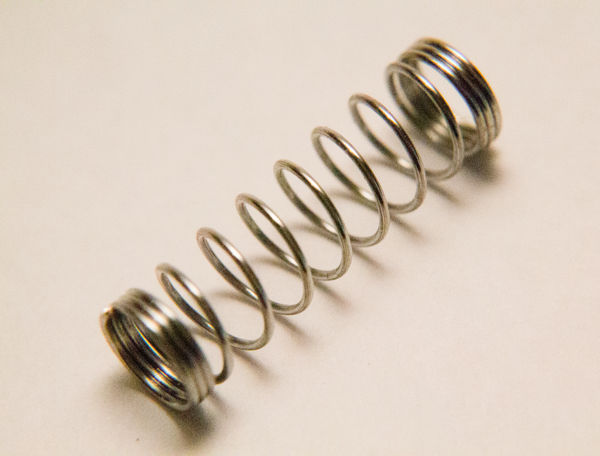
The setup
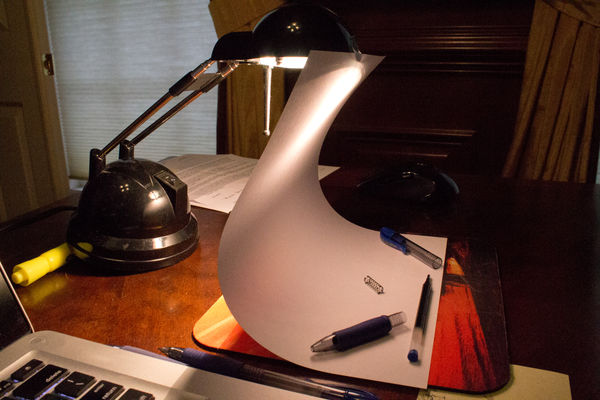
Oct 15, 2014 17:59:26 #
agilmore wrote:
I thought you would like to look at my first macro. I just received some macro filters in the mail and decided to give this a try.
I was afraid that taking a photo of an insect (which was moving here and there) would drive me buggy, so I chose an inanimate object.
I am curious, macro filters seem to be quite a bit less expensive, and smaller, than a macro lens. So what is the disadvantage?
I was afraid that taking a photo of an insect (which was moving here and there) would drive me buggy, so I chose an inanimate object.
I am curious, macro filters seem to be quite a bit less expensive, and smaller, than a macro lens. So what is the disadvantage?
I like your "studio" set up there. Very nice and gives me some ideas! Thanks!
:thumbup:
Oct 15, 2014 18:02:20 #
Oct 15, 2014 18:55:12 #
Sherman A1 wrote:
I like your "studio" set up there. Very nice and gives me some ideas! Thanks!
:thumbup:
:thumbup:
Yes, I like the lighted paper effect.
Oct 15, 2014 18:59:59 #
My first guess was Pen, Ford springs are almost always rusty. :lol:
As you slide down the slippery slope of the Macro world you might like to get some extension tubes (changes the focal length of your current lenses), and maybe even a lens reversal ring. (Turns your current lens around backwards for some amazing results.
I did all of that and more going down the vortex of Macro shooting.
Then I bought a real Macro lens. And hardware. And a ring light. And... And... :-(
Where I are today.... http://www.uglyhedgehog.com/t-32754-6.html#4177375
BUT.... Macro is right there outside your door. Even as near as your desk or fridge. (As you already discovered)
BTW, since you already discovered back drops, try a black paper or cloth as a backdrop. :shock:
I used a black towel as a drop for woodworking project pictures. Makes stuff POP! ;)
Have fun!
As you slide down the slippery slope of the Macro world you might like to get some extension tubes (changes the focal length of your current lenses), and maybe even a lens reversal ring. (Turns your current lens around backwards for some amazing results.
I did all of that and more going down the vortex of Macro shooting.
Then I bought a real Macro lens. And hardware. And a ring light. And... And... :-(
Where I are today.... http://www.uglyhedgehog.com/t-32754-6.html#4177375
BUT.... Macro is right there outside your door. Even as near as your desk or fridge. (As you already discovered)
BTW, since you already discovered back drops, try a black paper or cloth as a backdrop. :shock:
I used a black towel as a drop for woodworking project pictures. Makes stuff POP! ;)
Have fun!
Oct 16, 2014 11:20:41 #
Oct 16, 2014 13:26:25 #
agilmore wrote:
I thought you would like to look at my first macro. I just received some macro filters in the mail and decided to give this a try.
I was afraid that taking a photo of an insect (which was moving here and there) would drive me buggy, so I chose an inanimate object.
I am curious, macro filters seem to be quite a bit less expensive, and smaller, than a macro lens. So what is the disadvantage?
I was afraid that taking a photo of an insect (which was moving here and there) would drive me buggy, so I chose an inanimate object.
I am curious, macro filters seem to be quite a bit less expensive, and smaller, than a macro lens. So what is the disadvantage?
+++++++++++++++
Very Cool set-up == I like your "Make-It-Do = With What You Have" thinking.
And the yellow highlighter for adjustment of the angle of the defused lighting.
:-)
Oct 16, 2014 20:47:58 #
RWR
Loc: La Mesa, CA
[quote=SonnyE] ... you might like to get some extension tubes (changes the focal length of your current lenses) ... [quote]
Care to explain the physics behind how an extension tube changes a lens' focal length?
Care to explain the physics behind how an extension tube changes a lens' focal length?
Oct 16, 2014 23:06:39 #
[quote=RWR][quote=SonnyE] ... you might like to get some extension tubes (changes the focal length of your current lenses) ...
_________________________________
This is Quoted from another web-site..... ((Note = I did NOT write this....))
""First, a short quote from John Shaw's excellent book "Closeups in Nature" (ISBN 0-8174-4052-6), that gives a basic formula on the use of extension tubes in macro photography:
Quote:
John Shaw writes::
The total amount of extension you need in order to get to any given magnification depends on the focal length of the lens you are using. Notice that I say "total" extension; it does not matter how you gain the extension -- some could be added by using extension tubes, some could be in the focusing mount of the lens -- since the entire amount being used is what is important. A basic formula gives approximate magnification rates:
Total extension used / Focal length used = Magnification
If you want to photograph at 1/2x with a 50mm lens, you can see that you need 25mm of total extension. But on a 100mm lens, the same 25mm total extension yields only 1/4x, and on a 200mm lens it yields 1/8x. Any given amount of extension yields less magnification when used with a longer focal-length lens.
Note that, by "1/2x," etc., he is talking about the magnification of image at the film/sensor plane. So, as an example, at 1/2x magnification and using an EOS 10D, you would be filling the viewfinder with an object of a size 45.4mm x 30.2mm (double the size of the CMOS sensor -- 22.7mm x 15.1mm -- used in 10D). Hope this part is clear.
How to use the formula
In order to use the above basic formula to derive the answer you are seeking, you need to know the amount of (effective) extension built into the lens of your interest.
(I say "effective" because these days many lenses don't use a simple lens extension to achieve a close focus, instead rearranging position of lenses. This often produces a side effect of changing the actual focal length of the lens a bit -- even if it is a prime (i.e., non-zoom) lens -- introducing discrepancies between the theory and reality.)
Usually this "built-in extension" value is not part of a published lens spec.
However, you can derive this value using the lens' maximum image magnification value (or alternatively a minimum coverage area) and the lens' focal length, usually found in the lens spec. (How accurate these published values are remains a question. But let's not get too critical...)
Now, I will refer to such a chart from Canon...
Example: Step 1. Magnification
Let's pick EF50mm f/1.8 II. The table says the closest focus distance for this lens is 0.45 meters (= ~17.7 inches), and the maximam magnification is 0.15x. Using the above basic formula:
x / 50 = 0.15
Solving for x, the derived maximum built-in lens extension is: x = 50 * 0.15 = 7.5mm
If you add Canon's 12mm extension tube to this lens, you will achieve a maximum total extension of 7.5 + 12 = 19.5mm
Therefore, using a 12mm extension tube with EF50 1.8 II lens, you can obtain a maximum magnification of:
19.5 / 50 = 0.39
a magnification of 0.39x [Filling the frame with an object of actual size 58.2mm x 38.7mm]
Example: Step 2. Minimum focusing distance (a rough approximation)
[NOTE: The following was corrected and updated Nov. 7, '03]
To continue with the example and figure out new minimum focusing distance (MFD) from the new magnification, we need the help of a few additional formulas (found in any general physics book):
1) M = b/a
2) 1/a + 1/b = 1/f
3) MFD = a + b
where
M: Magnification
a: lens-to-subject distance
b: lens-to-film/sensor distance
f: focal length
[NOTE: for a and b above, the position of lens being referred to is that of a theoretical equivalent lens of single element, NOT of the actual camera lens which usually have multiple elements.]
So, given the new magnification of 0.39x and focal length of 50mm:
M = 0.39 = b/a
1/a + 1/b = 1/50
Solving for a and b, you get:
a=178.2mm
b=69.5mm
MFD = a + b = 247.7mm
That is to say, using EF50mm f/1.8 II lens with a 12mm extension tube, the minimum focus distance should be reduced from 0.45 meters to ~0.25 meters (17.7 inches to ~9.75 inches)
(Would anyone care to run a test to see if this calculated value matches the reality? I don't have an EF50mm 1.8II lens to test with.)
Anyway, I hope this kind of answers your original question...
--
PS. DISCLAIMER: Note that, as I originally stated at the very beginning of the post, there are a number of reasons why these simple formulas would not yield very accurate results. (Especially the minimum focusing distance -- the formula for magnification should be more useful.) If what you are after is accuracy -- I recommend that you actually try it out and measure it. 8).""
((I am posting this because someone ask about the physics (i.e.= Math) about extension tubes... So Here Ya Go.))
Quote:
Care to explain the physics behind how an extension tube changes a lens' focal length?
Care to explain the physics behind how an extension tube changes a lens' focal length?
_________________________________
This is Quoted from another web-site..... ((Note = I did NOT write this....))
""First, a short quote from John Shaw's excellent book "Closeups in Nature" (ISBN 0-8174-4052-6), that gives a basic formula on the use of extension tubes in macro photography:
Quote:
John Shaw writes::
The total amount of extension you need in order to get to any given magnification depends on the focal length of the lens you are using. Notice that I say "total" extension; it does not matter how you gain the extension -- some could be added by using extension tubes, some could be in the focusing mount of the lens -- since the entire amount being used is what is important. A basic formula gives approximate magnification rates:
Total extension used / Focal length used = Magnification
If you want to photograph at 1/2x with a 50mm lens, you can see that you need 25mm of total extension. But on a 100mm lens, the same 25mm total extension yields only 1/4x, and on a 200mm lens it yields 1/8x. Any given amount of extension yields less magnification when used with a longer focal-length lens.
Note that, by "1/2x," etc., he is talking about the magnification of image at the film/sensor plane. So, as an example, at 1/2x magnification and using an EOS 10D, you would be filling the viewfinder with an object of a size 45.4mm x 30.2mm (double the size of the CMOS sensor -- 22.7mm x 15.1mm -- used in 10D). Hope this part is clear.
How to use the formula
In order to use the above basic formula to derive the answer you are seeking, you need to know the amount of (effective) extension built into the lens of your interest.
(I say "effective" because these days many lenses don't use a simple lens extension to achieve a close focus, instead rearranging position of lenses. This often produces a side effect of changing the actual focal length of the lens a bit -- even if it is a prime (i.e., non-zoom) lens -- introducing discrepancies between the theory and reality.)
Usually this "built-in extension" value is not part of a published lens spec.
However, you can derive this value using the lens' maximum image magnification value (or alternatively a minimum coverage area) and the lens' focal length, usually found in the lens spec. (How accurate these published values are remains a question. But let's not get too critical...)
Now, I will refer to such a chart from Canon...
Example: Step 1. Magnification
Let's pick EF50mm f/1.8 II. The table says the closest focus distance for this lens is 0.45 meters (= ~17.7 inches), and the maximam magnification is 0.15x. Using the above basic formula:
x / 50 = 0.15
Solving for x, the derived maximum built-in lens extension is: x = 50 * 0.15 = 7.5mm
If you add Canon's 12mm extension tube to this lens, you will achieve a maximum total extension of 7.5 + 12 = 19.5mm
Therefore, using a 12mm extension tube with EF50 1.8 II lens, you can obtain a maximum magnification of:
19.5 / 50 = 0.39
a magnification of 0.39x [Filling the frame with an object of actual size 58.2mm x 38.7mm]
Example: Step 2. Minimum focusing distance (a rough approximation)
[NOTE: The following was corrected and updated Nov. 7, '03]
To continue with the example and figure out new minimum focusing distance (MFD) from the new magnification, we need the help of a few additional formulas (found in any general physics book):
1) M = b/a
2) 1/a + 1/b = 1/f
3) MFD = a + b
where
M: Magnification
a: lens-to-subject distance
b: lens-to-film/sensor distance
f: focal length
[NOTE: for a and b above, the position of lens being referred to is that of a theoretical equivalent lens of single element, NOT of the actual camera lens which usually have multiple elements.]
So, given the new magnification of 0.39x and focal length of 50mm:
M = 0.39 = b/a
1/a + 1/b = 1/50
Solving for a and b, you get:
a=178.2mm
b=69.5mm
MFD = a + b = 247.7mm
That is to say, using EF50mm f/1.8 II lens with a 12mm extension tube, the minimum focus distance should be reduced from 0.45 meters to ~0.25 meters (17.7 inches to ~9.75 inches)
(Would anyone care to run a test to see if this calculated value matches the reality? I don't have an EF50mm 1.8II lens to test with.)
Anyway, I hope this kind of answers your original question...
--
PS. DISCLAIMER: Note that, as I originally stated at the very beginning of the post, there are a number of reasons why these simple formulas would not yield very accurate results. (Especially the minimum focusing distance -- the formula for magnification should be more useful.) If what you are after is accuracy -- I recommend that you actually try it out and measure it. 8).""
((I am posting this because someone ask about the physics (i.e.= Math) about extension tubes... So Here Ya Go.))
Oct 17, 2014 06:49:27 #
RWR
Loc: La Mesa, CA
[quote=James R] (I say "effective" because these days many lenses don't use a simple lens extension to achieve a close focus, instead rearranging position of lenses. This often produces a side effect of changing the actual focal length of the lens a bit -- even if it is a prime (i.e., non-zoom) lens -- introducing discrepancies between the theory and reality.) [quote]
This may explain how someone unfamiliar with close-up photography could conceive that attaching an extension tube could magically change a lens' focal length, this action being, of course, strictly a function of its internal mechanism.
It is unfortunate that the title of this thread does not mention close-ups, and many will miss it, but the information you have provided will be valuable to those newcomers who do read it. :)
This may explain how someone unfamiliar with close-up photography could conceive that attaching an extension tube could magically change a lens' focal length, this action being, of course, strictly a function of its internal mechanism.
It is unfortunate that the title of this thread does not mention close-ups, and many will miss it, but the information you have provided will be valuable to those newcomers who do read it. :)
Oct 17, 2014 21:22:25 #
agilmore wrote:
I thought you would like to look at my first macro. I just received some macro filters in the mail and decided to give this a try.
I was afraid that taking a photo of an insect (which was moving here and there) would drive me buggy, so I chose an inanimate object.
I am curious, macro filters seem to be quite a bit less expensive, and smaller, than a macro lens. So what is the disadvantage?
I was afraid that taking a photo of an insect (which was moving here and there) would drive me buggy, so I chose an inanimate object.
I am curious, macro filters seem to be quite a bit less expensive, and smaller, than a macro lens. So what is the disadvantage?
Very well done!!!
:thumbup: :thumbup: :thumbup:
Oct 18, 2014 01:22:18 #
[quote=RWR][quote=SonnyE] ... you might like to get some extension tubes (changes the focal length of your current lenses) ...
My understanding is it moves the lens out from the image sensor and allows the lens to focus at a much closer point.
Effectively adding to the distance the lens would normally present to the image sensor.
Another low expense way to"trick" a lens into doing higher magnification was with a lens reversal ring (adapter).
The lens reversal ring was one thing that I found made me want to use the kit lenses that came with my lunch box camera. And it really opened up my interest in the world of macro photography.
Since I had the lens extension adapters anyway, after I got a true macro lens, I then can (and have) used them together to modify the lens from one area of use (180mm in my case), to plus 12mm, 24mm, or 36mm.
Fun to experiment with.
But I bet you already know that anyway....
A couple of references: http://www.digitalcameraworld.com/2012/09/07/what-is-focal-length-definition-comparison-every-question-answered/
"Contrary to common belief, focal length isnt a measure of how long or short a lens is physically, but the distance in millimetres from the optical centre of a lens to the imaging sensor when the lens is focused at infinity."
Bottom line, to me is, there are other ways to open up the macro world besides a lens investment. Not everybody wants to take that step to invest in a True Macro 1:1 lens.
But many can venture there with a few relatively easy to procure parts that modify the focal length (center of the lenses focal length as designed) by extending it in known distances. Effectively changing that lenses center to a greater distance from the image sensor.
So I found a new purpose to my kit lenses and a reason to enjoy having them in my box of glass.
Maybe by explaining the less costly methods to some budding photographers, it could encourage more to enjoy stepping outside the norms. :?:
And to enjoy lenses normally damned because they were supplied with their initial purchase.
Quote:
Care to explain the physics behind how an extension tube changes a lens' focal length?
Care to explain the physics behind how an extension tube changes a lens' focal length?
My understanding is it moves the lens out from the image sensor and allows the lens to focus at a much closer point.
Effectively adding to the distance the lens would normally present to the image sensor.
Another low expense way to"trick" a lens into doing higher magnification was with a lens reversal ring (adapter).
The lens reversal ring was one thing that I found made me want to use the kit lenses that came with my lunch box camera. And it really opened up my interest in the world of macro photography.
Since I had the lens extension adapters anyway, after I got a true macro lens, I then can (and have) used them together to modify the lens from one area of use (180mm in my case), to plus 12mm, 24mm, or 36mm.
Fun to experiment with.
But I bet you already know that anyway....
A couple of references: http://www.digitalcameraworld.com/2012/09/07/what-is-focal-length-definition-comparison-every-question-answered/
"Contrary to common belief, focal length isnt a measure of how long or short a lens is physically, but the distance in millimetres from the optical centre of a lens to the imaging sensor when the lens is focused at infinity."
Bottom line, to me is, there are other ways to open up the macro world besides a lens investment. Not everybody wants to take that step to invest in a True Macro 1:1 lens.
But many can venture there with a few relatively easy to procure parts that modify the focal length (center of the lenses focal length as designed) by extending it in known distances. Effectively changing that lenses center to a greater distance from the image sensor.
So I found a new purpose to my kit lenses and a reason to enjoy having them in my box of glass.
Maybe by explaining the less costly methods to some budding photographers, it could encourage more to enjoy stepping outside the norms. :?:
And to enjoy lenses normally damned because they were supplied with their initial purchase.
Oct 18, 2014 06:12:26 #
RWR
Loc: La Mesa, CA
SonnyE, my only point was that some readers may be mislead by the assertion that an extension tube can change a lens' focal length, which of course it cannot. Certainly, as you pointed out, one can easily produce top quality close-ups with a minimal investment. Your information should be helpful to many. :)
Oct 18, 2014 10:07:32 #
This perhaps may not answer any question(s) have or really clarify - but I did find the illustration of interest.
It is more for the calculations for Depth Of Field....
See Attached.
It is more for the calculations for Depth Of Field....
See Attached.
DOF chart
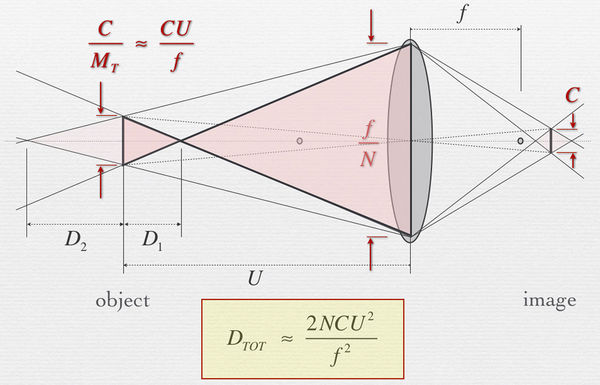
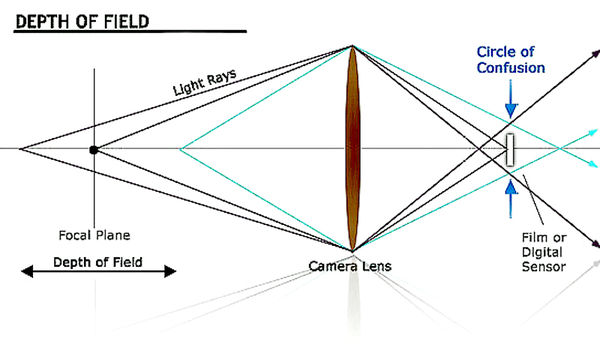
Oct 18, 2014 12:49:57 #
RWR wrote:
SonnyE, my only point was that some readers may be mislead by the assertion that an extension tube can change a lens' focal length, which of course it cannot. Certainly, as you pointed out, one can easily produce top quality close-ups with a minimal investment. Your information should be helpful to many. :)
Possibly I misunderstood focal length. But I thought I read elsewhere on UHH that extension tubes modified the image sensors view of the lenses light.
But from James R's diagram, 2nd illustration, it appears extension tubes change the DOF (depth of field)?
Lots to learn. And I like rubbing elbows here. ;)
As you can see from this lens reversal thread I have a lot to learn. ;)
http://www.uglyhedgehog.com/t-245976-1.html#4136348
If you want to reply, then register here. Registration is free and your account is created instantly, so you can post right away.






